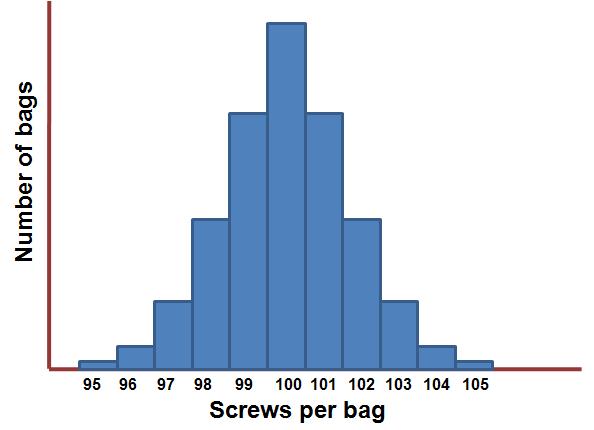Six Sigma
Six Sigma is a proven methodology developed by Motorola in the late 1980's to improve the performance of business delivery by identifying and eradicating variation in processes. Since then it has been used successfully by many many companies, including GE, ABB, Sun Microsystems to name but a few. The approach requires a focus on statistics, to enable the effective analysis of variation, and causes of variation.
The development of Six Sigma since then has resulted in it becoming a philosophy, a methodology, a toolbox, a management approach, and others. More recently as Lean has developed as a popular approach to business improvement, Lean Six Sigma has brought together these approaches, often in a confused and mis-understood way.
Variation is difference in delivery that the customer experiences over time. For example, the arrival of the 10:20 bus may vary every day, sometimes it might be early, and sometimes late. Or numbers of screws in a bag from the DIY store may vary, sometimes being more and sometimes less than the stated number. Variation is a killer! It leads to the product not meeting customer needs, it leads to waiting, batching and other mitigating actions, and reflects a delivery process that is not optimised.
If we were to count the number of screws in the bags in the DIY store, we would find out the number, or percentage that were incorrect. Plotting the number of screws per bag on a graph will usually give a shape shown below.

It is this percentage of errors that created the term Six Sigma. The term Sigma is a statistical term that reflects the defect rate, shown in the table below:
| defect rate | Sigma Level |
| 69% | 1 |
| 31% | 2 |
| 6.6% | 3 |
| 0.62% | 4 |
| 0.02% | 5 |
| 0.00034% | 6 |
A couple of observations from the table:
- Six Sigma is equivalent to a defect rate of 0.00034% or 3.4 defects per 1 million opportunities. This was considered to be "world class" when Motorola first introduced the six sigma approach.
- The Sigma level is not linear scale - it gets more difficult to improve your sigma level the higher you go.
Six Sigma programmes generally implement many six sigma projects, in an overall programme. Improvement team participants and leaders are trained, and can be accredited, based on their skill, experience and role. The different stages of development of six sigma practitioners are divided into "belts":
| Belt | Description |
| Master Black Belt | This is the six sigma "guru" with many years experience in six sigma, and usually a very high capability of applying statistical tools. They support projects, develop Black Belts, and develop the six sigma capability in the organisation |
| Black Belt | Black Belts are generally full time six sigma project leaders, delivering often several projects simultaneously within a business. They are usually involved in training, and supporting Green Belts, and have a high statistical and business change capability. |
| Green Belt | Green Belts may be full or part time, and either leading projects or playing a key role in larger projects. They have received training and are developing their skills and experience |
| Yellow Belt | Yellow Belt is often used to describe people who have received a basic introduction in Six Sigma and are involved in projects in some way. |
There are many books→, and web materials to support six sigma programmes.